#builtenvironment
Text
COMMUNITY ROUND-UP

David Foster Nass, Clowns to the left of me, Jokers to the right.
«Environments are […] invisible,»¹ Marshall McLuhan once wrote. We need the artist to change our frame or perception, in order for us to «see the same thing that we have already seen before or at least could have seen, from a new perspective, in a new context.»² It is the artist who makes visible «what is otherwise present but overlooked.»³
See more here → Instagram.
[1] Marshall McLuhan, The Medium is the Message. [2] Lucius Burckhardt, Why is Landscape Beautiful? [3] Ibid.
#allcitiesarebeautiful#cityscape#landscape#new topographics#alteredlandscape#builtenvironment#photographicresearch#vernacular architecture
6 notes
·
View notes
Photo
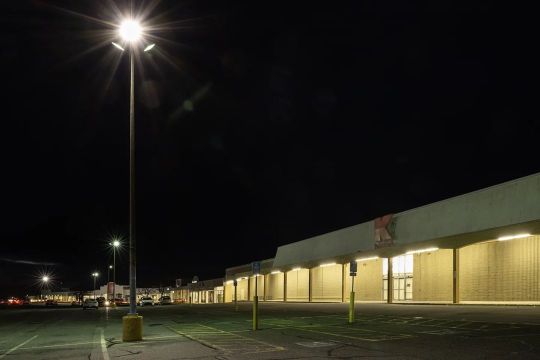
Retail streams continue to dry up in the economy. This is, in good part, driven by online sales. Nonetheless, development is predicated on its continued reliance on brick and mortar. Have you been in Best Buy lately? It looks like a Sears catalogue store. #builtenvironment #socialcommentary #development #architecture #landscape #newtopographics #nightphotography #suburbanlandscape #emptystore #vacancy #Kmart #shoppingcenter #shoppingplaza #documentary #documentarylandscape #documentaryphotography #lyricdocumentary #fineartphotography #capecod #capecodinsta #capecodinstagram #capecodphotography #capecodphotographer #newengland (at Hyannis, Massachusetts) https://www.instagram.com/p/CqAxat-uq70/?igshid=NGJjMDIxMWI=
#builtenvironment#socialcommentary#development#architecture#landscape#newtopographics#nightphotography#suburbanlandscape#emptystore#vacancy#kmart#shoppingcenter#shoppingplaza#documentary#documentarylandscape#documentaryphotography#lyricdocumentary#fineartphotography#capecod#capecodinsta#capecodinstagram#capecodphotography#capecodphotographer#newengland
6 notes
·
View notes
Text

Intersections of Science, History, and Philosophy in Architectural Discourse
In the realm of architecture, the confluence of scientific principles, historical contexts, and philosophical inquiries offers a rich tapestry for critical analysis. The data provided presents a compelling exploration of these intersections, inviting us to delve deeper into the multifaceted nature of architectural discourse.
At the heart of the discussion lies the concept of the magic angle, a precisely defined angle with profound implications in scientific fields such as solid-state NMR spectroscopy and magnetic resonance imaging. From an architectural standpoint, the magic angle prompts reflection on the nuanced relationship between form and function. Just as scientific interactions depend on precise alignments, architectural elements must harmonize to create spatial experiences that transcend the ordinary.
Parallel to this scientific inquiry is the exploration of the Primitive Hut, a foundational concept in architectural theory that posits architecture's origins in the fundamental relationship between humans and their natural environment. This notion challenges architects to create spaces that seamlessly integrate with their surroundings, embodying what is natural and intrinsic. The Primitive Hut serves as a reminder of architecture's roots and the enduring relevance of contextual sensitivity and sustainability in design practice.
The discourse also delves into architectural responses to historical events, particularly wars. From restorationist approaches seeking to recreate pre-war conditions to innovative styles reflecting the need for progress, architects have grappled with reconciling the past with the imperatives of the present. This dynamic evolution reflects architecture's resilience and adaptability as a discipline shaped by socio-historical forces.
Central to the discussion is the work of Bruno Minardi, whose reinterpretation of the Primitive Hut in pieces like "Le bateau ivre" exemplifies architecture's transformative power. By situating the primitive hut concept within contemporary contexts, Minardi challenges traditional narratives and invites reflection on architecture's role in shaping perceptions and narratives. The incorporation of the magic angle into architectural form further blurs the boundaries between science and architecture, opening new avenues for exploration and expression.
Moreover, the mention of axonometric drawing and its inherent blind spot leading to the fourth dimension adds a layer of complexity to architectural representation. Architects confront the challenge of translating multidimensional concepts into two-dimensional drawings, highlighting the need for innovative visualization techniques.
In conclusion, the data underscores architecture's multifaceted nature, encompassing scientific inquiry, historical context, and philosophical discourse. By engaging with these intersecting realms, architects have the opportunity to transcend the ordinary and contribute to the collective human experience through the built environment. As critical observers, we must continue to explore these intersections and interrogate the implications for architecture and society at large.
#ArchitecturalIntersections#MagicAngle#PrimitiveHut#BrunoMinardi#ArchitecturalTheory#HistoricalContext#PhilosophicalInquiry#Sustainability#Innovation#AxonometricDrawing#BuiltEnvironment#ArchitectureAndScience#ArchitectureAndHistory#ArchitectureAndPhilosophy#SpatialExperiences#InterdisciplinaryApproach#architecture#berlin#area#london#acme#chicago#puzzle#edwin lutyens#massimoscolari#oma#bruno minardi
0 notes
Text
UK Construction Compliance Regulations in 2024
Greetings, fellow builders! As we gear up for another year in the construction world, it’s crucial to stay updated on the latest UK construction compliance regulations.
Navigating these changes is like having a powerful tool for successful project management. In this extensive blog post, we’ll delve into the details, providing a thorough overview of what’s new, the key changes in 2024, and…

View On WordPress
#BuildersGuide#BuildingSafety#BuildingStandards#BuiltEnvironment#ComplianceTips#ConstructionCompliance#ConstructionInnovation#ConstructionRegulations#ConstructionTech#ConstructionUpdates#DigitalDocumentation#DigitalTransformation#EcoFriendlyConstruction#EnvironmentalCompliance#GreenBuilding#IndustryInsights#LegalCompliance#NetZeroCarbon#ProjectManagement#RegulatoryChanges#SafeBuilds#SafetyFirstBuildAlways#SustainableConstruction#UKBuilders#UKBuilds2024
0 notes
Text
Yeojin Kim: UEP Thesis Award Winner, 2023
Socio-Economic and Built Environment Analysis of NYC Citi Bike Electric Bike Share Origin and Destinations
This outstanding thesis uses quantitative and Geographic Information System (GIS) analysis to investigate travel behavior on the station based electric bike share system (E-BSS) in New York City, explore the impacts of socioeconomic and built environment characteristics and pricing on E-BSS trip durations, and analyze the effects of E-BSS on the accessibility of origin and destination areas. The thesis is contextualized in a comprehensive review of the literature, clearly structured, and presented in a thorough way with convincing evidence to support the findings. The data and method used for this research is appropriate and described in good detail. This thesis revealed interesting findings -- that E-BSS was used for slightly longer distances and duration than classic bikes and that four built environment characteristics had statistically significant impact on trip duration -- which were effectively presented through well-done maps and figures. Furthermore, while race and income were not statistically significant for trip duration, the thesis found that socioeconomic segregation and disparity of E-BSS use are linked with the lack of E-BSS accessibility for low-income Black groups. These findings have policy implications for how to improve the deployment of non-motorized transportation modes in cities.
Abstract
Station based electric bike share system (E-BSS) require less physical exertion to bike and allow for faster and longer distance travel, which has the potential to replace shorter car trips and fill the gaps of transit deserts. Despite the benefits of E-BSS, research shows that bike share systems are disproportionately used by white middle income populations. This thesis uses Geographic Information System (GIS) analysis to understand the travel patterns of E-BSS, the impact of race, income, built environment, and pricing characteristics on trip duration, and origin and destination (OD) patterns. The results show that E-BSS was used for slightly longer distances and duration than classic bikes. Moreover, the four built environment characteristics had statistically significant impact on trip duration. While race and income were not statistically significant to trip duration, spatial segregation of socioeconomics and disparity of E-BSS use point to the lack of E-BSS accessibility for low-income Black groups.
#2023#MS#Hollander#YeojinKim#SocioEconomicAndBuiltEnvironmentAnalysisOfNYCCitiBikeElectricBikeShareOriginAndDestinations#SocioEconomic#BuiltEnvironment#NYC#CitiBike#BikeShare#ElectricBikes
0 notes
Text
City of Longevity – the Barcelona Meet-up take away.

Along the Smart City Expo World Congress - attended by more than 25,000 people from 800 cities - we partnered with the Barcelona City Council on a special offsite event, the Barcelona Meetup, for some of the founder members of the City of Longevity global community, which was established at the inaugural City of Longevity conference in Newcastle in July 2023.
Purpose of the meet up was to update on the City of Longevity progresses and listen from the city delegates which are supporting the program, feedback, and insights. Moreover, our host, the City of Barcelona updated us on their strategic plan and the outcome of core interventions, with a special focus on the impact of Superilles (or superblocks) on longevity.

Here are our take aways:
Take away 1/ The format: we talk in the city, together with the citizens.
Thanks to the support of the Barcelona City Council, we were able to meet in the Sant Antoni market, in the heart of the city. Per our fashion, we tried to cancel the distance between 'stage' and 'audience' and trigger a discussion where we learn from dialogue. The subject of longevity is still hostage to cultural domains which struggle to see behavioural patterns, social circumstances, and environmental exposures as key determinants to healthy longevity. Where the meaning of “healthy” is strongly related to quality of life. It is time to put biology and post-codes on the same level. Ultimately, the City of Longevity must happen in the city also to take advantage, learn and breath the cultural canons of the host city.
Take away 2/ Why do we need a city of longevity? Because we have no choice.
Well told by Joachim Rautter/Berlin: According to the UN, the combination of maintaining a healthy weight, regular exercise, a healthy diet and not smoking can reduce the risk of developing the most common and deadly chronic diseases by as much as 80%. Both our lifespan and our healthspan—the period of time in which we’re not just alive but healthy and enjoying a good quality of life—are hugely influenced by our lifestyle. And lifestyles happens where we spend our lives. Cities are the engine to help citizens improving their lifestyles from the ground up added Sally Herbert/Newcastle.
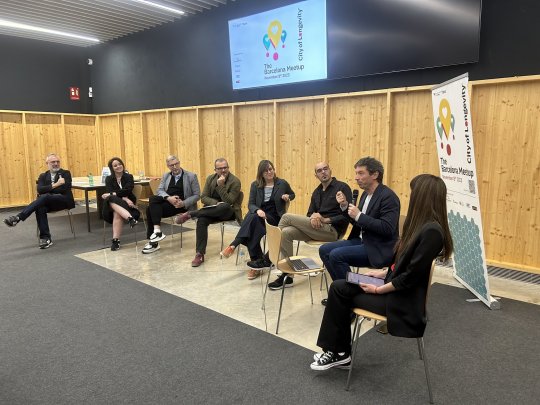
Take away 3/ Is urban planning a driver to healthy longevity?
The Sant Antoni Market is the epicentre of the Superilles (or superblocks), one of the urban redevelopment projects underway in Barcelona that are literally revolutionising the concept of public urban spaces, reconquering for the benefit of citizens what until a while ago seemed to be unbreakable axes of urban architecture: the streets, the crossroads, the pavements.
Much has already been said about Superilles, one of the first studies on their impact suggests that they can contribute to health through the reduction of both air and noise pollution, while a second study does not confirm whether this strategy can encourage people to be more active. However, it is too early to make an assessment. The Superilles still need to discount the 'sightseeing' effect and gradually become part of everyday life. Thanks to Ariadna Miquel Amengual/Barcelona enlightening presentation and to Daniel Alsina Torra/Barcelona guided tour of the superilles, these are our takeaways:
There is no need to (necessarily) build ad-hoc places or spaces, one can intelligently reinvent the existing. Which is great news for the cities of old Europe, and beyond.
Reinventing the existing with the person at the centre can stimulate relationships, encourage walkability, mitigate traffic, develop green and cooling areas, amplify sharing places, offer support and opportunities for rest, foster urban connectivity, reduce air and noise pollution. In our City of Longevity overview we defined the city as a discreet partner and the superilles are a tangible example of this idea.
Changing the architectural context of space drives behavioural change. Both of those who drive a car and those who walk alongside it. Pedestrian spaces can be created without criminalising cars and without creating ghettos for cyclists. Which is perhaps much more sustainable and feasible, in scale, than thinking of closing cities under a bell jar.
We have probably focused too much on the proximity of services. Proximity also and above all means human sharing, relationship, presence. And to stimulate this, the redesigning of space is decisive.

Take away 4/ There is (free) time ahead.
We spent a lot of energy talking about the 15 minutes instead of the 50Trillion Hours we have ahead of us. Collectively, that's 195 billion hours of leisure a year for those age 65+ and about 3.9 trillion hours over the next 20 years in the US only. If we consider this phenomenon across the developed and developing world, that's around 50 trillion hours of time affluence - and looking for fun, stimulating, nourishing, purposeful, even transformative, things to do.
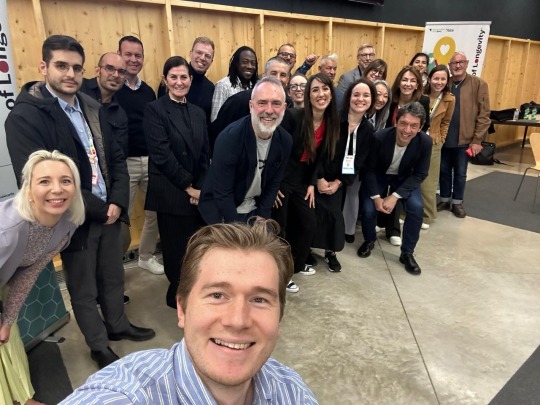
Takeaway 5/ Involving citizens is not only right, it is also possible.
The experiences of all the cities participating in the debate underlined how citizen involvement and participatory platforms are at the core of any possible discourse around the city of longevity. It seems obvious, but it is not. As professor Peter Madded said, "Almost none of the innovations on display at the adjacent Smart City World Expo Congress were citizen-driven, there is still a lot of rebalancing to be done". But when done correctly, the results are obvious, on the population and their healthy life expectancy.
Take away 6/ There is a need for relationship doctors
A cue suggested by Gianluca Galimberti/Cremona. Despite the endemic shortage of doctors, which we certainly need, there is perhaps a need to invent new professional figures, relationship doctors, relationship nurses, professionals capable of activating the relationship between citizens when architecture is not enough. A profession all the more necessary in the light of the integration of other cultures into our own.
Take away 7/ School is an engine for healthy longevity
As both Ariadna and Margarita Cejas/Buenos Aires emphasised, not only in relation to education, but also as a space/place for gathering and developing relationships, and for the importance of the role of children as actors/ambassadors of behavioural change in their families.
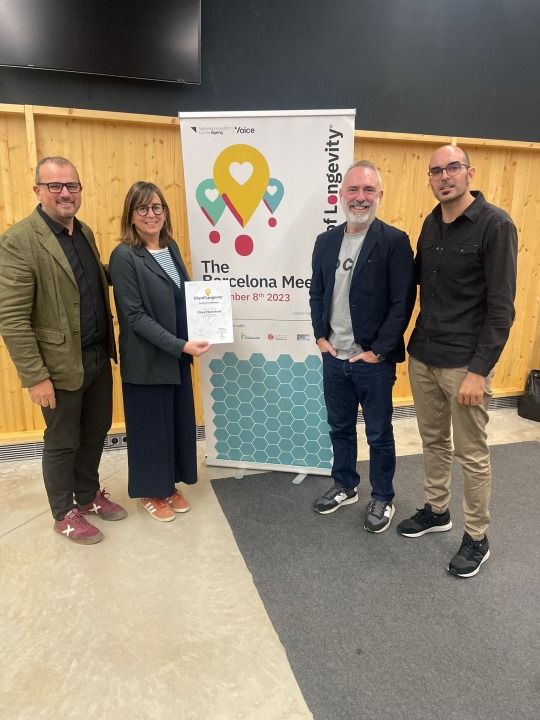

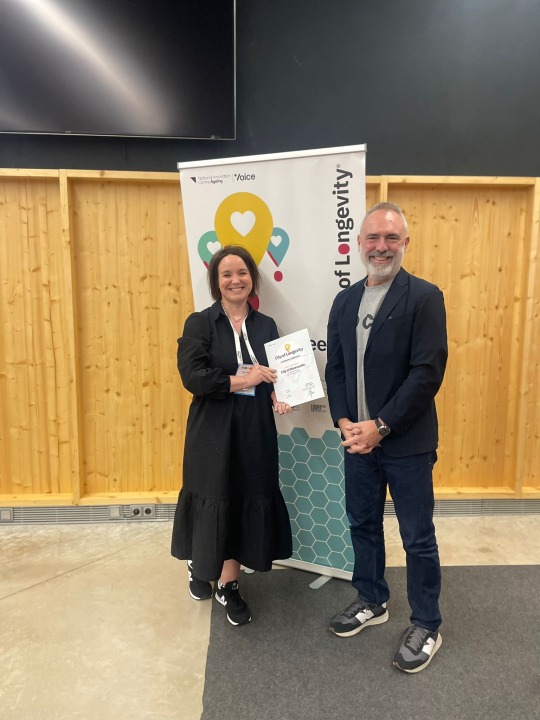
Take away 8/ Who pays for it?
An orchestrated longevity program needs a budget, and this budget comes from hybrid interactions between all the stakeholders. Interventions such as the Superilles have a return on investment, on society in the first place (and thus in the long run on a reduction in the cost of healthcare management) and on the economy. The local one, which benefits from the time/space offered by the recovery of the territory, and the global ones which - finally - can see the trillion-dollar promise of the longevity economy translated into a “where” it happens. Finally, there is the economy of data. It is time to engage citizens in a serious discussion about both how to make them owners of their own digital identity and how to let them decide how and whether to monetise it. A contract for which the city will have to act as intermediary, but which could revolutionise both the speed of development of innovation and its sustainability.
#cityoflongevity#dispatchesfromcol#behaviours#barcelona#cremona#newcastle#berlin#buenos aires#superilles#superblocks#event#delegatecities#builtenvironment#urbanplanning#lifestyle
0 notes
Text

#pretty pictures#sunshinewest#melbourne#australia#australiansuburbia#westernsuburbs#suburbia#facade#door#patina#newtopographics#builtenvironment#weathered
1 note
·
View note
Text

हरित भविष्य की ओर कदम बढ़ाएं, पर्यावरण दिवस मनाएं, प्रकृति का सम्मान करें।
#.#environment#mosambiindia#environmentallyfriendly#environmentalist#worldenvironmentday#savetheenvironment#environmentalism#environmentalscience#environmentalart#environmentfriendly#environmentalportrait#environmentaleducation#saveenvironment#environmentart#naturalenvironment#environmentalfriendly#environmentalawareness#environments#builtenvironment#environmentalprotection#environmentaldesign#cleanenvironment#protecttheenvironment#environmentalengineering#newenvironment#environmentalhealth#workenvironment#productoftheenvironment#environmentday
1 note
·
View note
Photo
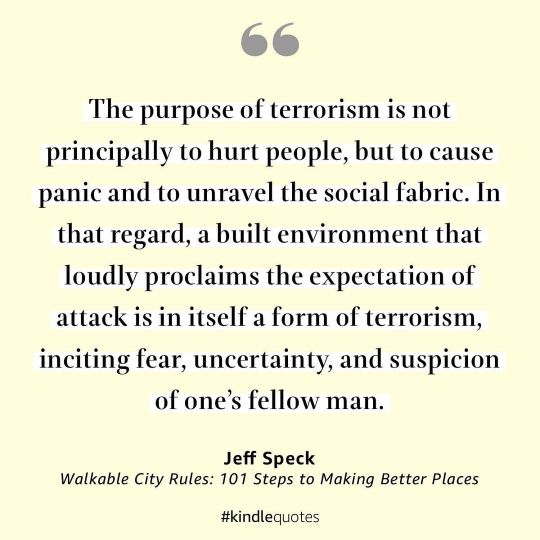
“Terrorists are like a fly that tries to destroy a china shop. The fly is so weak that it cannot budge even a single teacup. So it finds a bull, gets inside its ear and starts buzzing. The bull goes wild with fear and anger, and destroys the china shop. This is what happened in the Middle East in the last decade. Islamic fundamentalists could never have toppled Saddam Hussein by themselves. Instead they enraged the USA by the 9/11 attacks, and the USA destroyed the Middle Eastern china shop for them. Now they flourish in the wreckage.” — ‘Homo Deus: A Brief History of Tomorrow’ by Yuval Noah Harari (@yuval_noah_harari) #YuvalNoahHarari #HomoDeus #Terrorism #CounterTerrorism #UrbanDesign #JeffSpeck #WalkableCity #Walkability #SenseOfPlace #Streetscape #BuiltEnvironment #CityPlanning #BehaviorialEconomics (at Phoenix, Arizona) https://www.instagram.com/p/CqJqtylPfFG/?igshid=NGJjMDIxMWI=
#yuvalnoahharari#homodeus#terrorism#counterterrorism#urbandesign#jeffspeck#walkablecity#walkability#senseofplace#streetscape#builtenvironment#cityplanning#behaviorialeconomics
0 notes
Photo
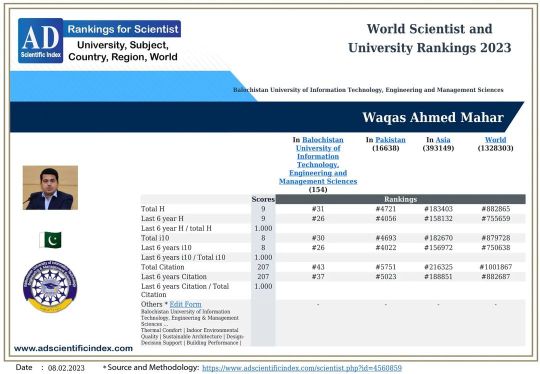
Inclusion in another list of Productive Scientists. I am pleased to share that my name is included in the AD Scientific Index 2023. The AD Scientific Index (Alper-Doger Scientific Index), unlike other systems that provide evaluations of journals and universities, is a ranking and analysis system based on the scientific performance and the added value of the scientific productivity of individual scientists. Furthermore, it provides rankings of institutions based on the scientific characteristics of affiliated scientists. https://lnkd.in/deUeWpxd #ThermalComfort #IndoorEnvironmentalQuality #SustainableArchitecture #BuildingPerformance #Climateresponsivedesign #Energy #fuelpoverty #Energyefficientbuildings #builtenvironment (at BUITEMS QUETTA) https://www.instagram.com/p/Cobq2oNN2ur/?igshid=NGJjMDIxMWI=
#thermalcomfort#indoorenvironmentalquality#sustainablearchitecture#buildingperformance#climateresponsivedesign#energy#fuelpoverty#energyefficientbuildings#builtenvironment
1 note
·
View note
Text
INTERVIEW
Adam Friedberg, Single Story Project

Adam Friedberg, Kehila Kedosha Janina Synagogue, Broome St New York, NY.
The Single Story Project delves into the evolving architectural landscape of New York City's Lower East Side neighborhoods. Over the past fifteen years, rapid development has transformed the area, giving rise to towering structures and altering the urban fabric. Amidst this transformation, single-story buildings stand as relics of a bygone era, their significance heightened by their dwindling presence in a rapidly changing skyline.
This project aims to document every remaining single-story building within the boundaries of Manhattan's Lower East Side, capturing them in their current state before they fade into obscurity. Through black-and-white photography, devoid of human presence, the focus remains on the buildings and their surrounding negative space, echoing the work of influential photographers such as August Sander and Robert Adams.
Drawing inspiration from luminaries in the field, the Single Story Project seeks to preserve the essence of these structures as historical artifacts, creating a visual testament to their enduring significance amidst the march of progress.
Read more here → allcitiesarebeautiful.com.
#allcitiesarebeautiful#adam friedberg#single story project#single story buildings#photography#photographers on tumblr#new topographics#alteredlandscape#builtenvironment#photographicresearch#vernacular architecture#new york city#lower east side#manhattan
6 notes
·
View notes
Photo
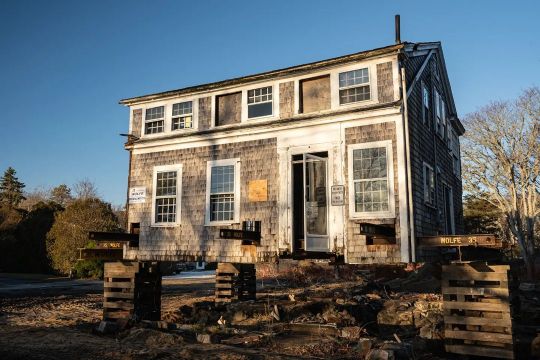
Some people pick up and move. Some people pick up and put down a new foundation. The house two doors over was just put back down recently. There are a few ways to go on the Cape. Some people tear down and build afresh. Some people work with what's there. Others take the old and turn it into some "builder style" amalgam of whatever they saw somewhere. As a "washashore" I fell in love with this place, so I always hope that people love it as I do and don't simply do a vanity project. The Cape won't stay the same. Nowhere does. Kudos to those who don't contribute to the generic architecture that is popping up around the country. #architecture #architecturephotography #landscapephotography #landscapephotographer #builtenvironment #moderntrends #fortheloveofoldhouses #renovation #renovationgoals #capecod #capecodigers #capecodinstagram #capecodphotographer #capecodphotography #coastallife #newengland #Massachusetts (at Yarmouth, Massachusetts) https://www.instagram.com/p/CpqkZBtPj0d/?igshid=NGJjMDIxMWI=
#architecture#architecturephotography#landscapephotography#landscapephotographer#builtenvironment#moderntrends#fortheloveofoldhouses#renovation#renovationgoals#capecod#capecodigers#capecodinstagram#capecodphotographer#capecodphotography#coastallife#newengland#massachusetts
2 notes
·
View notes
Photo

Researching for an essay… #amwriting #amreading #amresearching #writersofinstagram #writer #author #architecture #writingforjustice @penamerica #riotgrams #prison #builtenvironment (at Redlands, California) https://www.instagram.com/p/CnNJx5VPXVC/?igshid=NGJjMDIxMWI=
#amwriting#amreading#amresearching#writersofinstagram#writer#author#architecture#writingforjustice#riotgrams#prison#builtenvironment
1 note
·
View note
Text

Architectural Odyssey: Navigating the Seas of Knowledge
In the grand narrative of architectural marvels, the British Library stands as a formidable flagship, a bastion of knowledge navigating the tempestuous seas of history. Anchored in the heart of London, it commands reverence and respect, much like the battleship Sir Colin Alexander St John Wilson once served upon in the Royal Navy Reserve.
But amidst the solemnity of its corridors and the weight of its literary treasures, a whimsical dance unfolds—a dance between the past and the present, the sacred and the profane. Behold Newton, shrouded in bronze, his modesty preserved by a cloak of artistic reverence. A nod to William Blake's critique of scientific hubris, this sculpture by Eduardo Paolozzi is more than mere metal and mortar—it's a poignant reminder of the delicate balance between reason and imagination.
And what of the architect's role in this intricate tapestry of creation? Like Job, grappling with the mysteries of existence, architects are tasked with navigating the labyrinthine complexities of design and construction. From blueprint to building, they wield their pens and brushes with the skill of seasoned artisans, crafting monuments to human ingenuity that stand the test of time.
But beneath the veneer of artistic expression lies a deeper truth—a truth that speaks to the very essence of a job, a role, a work. For architects, it's not just about erecting structures; it's about shaping destinies, forging connections, and breathing life into the inert clay of possibility.
So, as we gaze upon the shrouded figure of Newton and marvel at the architectural wonders that surround us, let us not forget the architects—the unsung heroes of our built environment. Theirs is a job like no other, a calling that transcends mere profession, and a legacy that echoes through the annals of time.
#ArchitecturalOdyssey#KnowledgeVoyage#ArchitectsJourney#DesignExploration#BuiltEnvironment#LibraryLegacy#ArchitecturalHeritage#CreativeNavigation#ArchitectsRole#CulturalPreservation#architecture#berlin#area#london#acme#chicago#puzzle#edwin lutyens#massimoscolari#oma
0 notes
Text

Do you know that "Noise Pollution" isn't just annoying, it's bad for your health!
Install Delnoise Noise Barriers enjoy without noise pollution life.
Try our noise barrier 👉 www.delnoise.com 👈
#noise#barrier#pollution#noisepollution#awareness#stopnoisepollution#avoidnoisepollution#reducenoisepollution#soundabsorption#builtenvironment#roadnoisebarriers#highways#construction#ArchitecturalProducts#WorldBuildIndia2022#delnoisebarrier#kantaflex#guardio#delnoise#engineering
0 notes
Photo
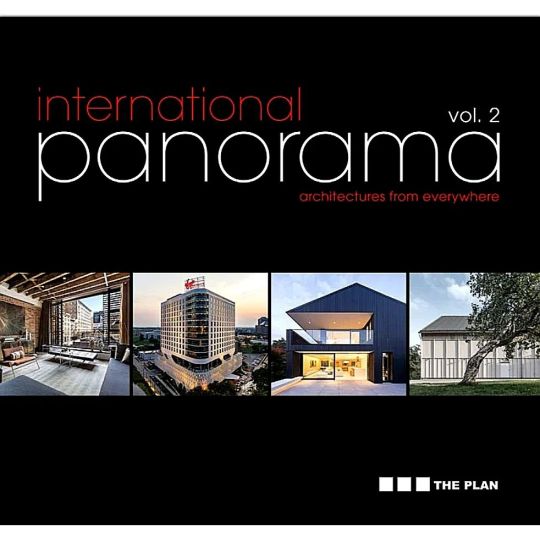
553 The scientific publisher of architecture @theplanmag has just published the second anthological volume of the "International Panorama" series with my foreword "A Chorus of Built Environmental Sustainability". In the 2022 volume I introduce with brief critical texts selected recent works by: @3_andwich @kaminskyarkitektur @flanagan_lawrence @architectonics2129 @studiosaar.design @raulino_arquitecto @dietrich_untertrifaller @ovarchitekti @5g_studio_collaborative #michaelgreenarchitecture @leckiestudio @tchobanvossarchitekten @546arch @studiolinkarc All together with great illustrations and detailed drawings. Run to the bookshop: this publication is only on paper #architecture #architecturedesign #sustainability #international #2022 #theplan #architecturalpractice #architecturalcriticism #builtenvironment #catalogue #anthology #printedbook #book (presso The Plan - Architecture Magazine) https://www.instagram.com/p/CkdiSS1sdQt/?igshid=NGJjMDIxMWI=
#michaelgreenarchitecture#architecture#architecturedesign#sustainability#international#2022#theplan#architecturalpractice#architecturalcriticism#builtenvironment#catalogue#anthology#printedbook#book
0 notes